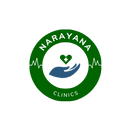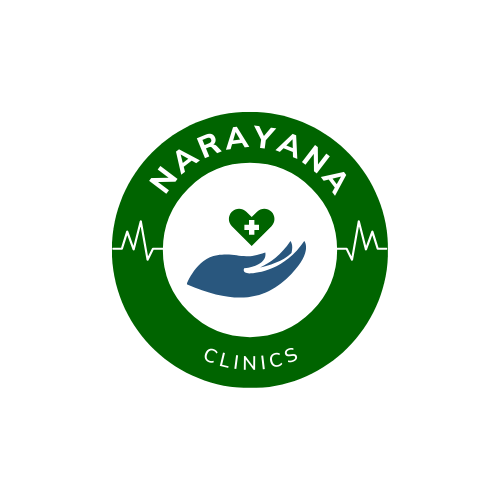Acupuncture
Acupuncture is a traditional Chinese medicine (TCM) practice that involves inserting thin needles into specific points on the body to stimulate energy flow, known as Qi (pronounced "chee"). It is based on the concept of meridians, or energy pathways, that run throughout the body. The goal of acupuncture is to restore balance to the body’s energy, alleviate pain, and promote healing. It is commonly used for pain management, stress relief, and treatment of various health conditions.

Detailed Procedure of Acupuncture
Here’s a step-by-step guide to the detailed procedure:
1. Initial Consultation and Diagnosis
Before an acupuncture session begins, the practitioner conducts a thorough evaluation of the patient to determine the root cause of their health concerns. The diagnosis is based on the principles of TCM, which focuses on imbalances in the body’s energy flow.
a) Patient Interview:
- The practitioner asks about the patient’s medical history, current symptoms, lifestyle habits, emotional well-being, and diet.
- Common questions include: Where is the pain located? How long have the symptoms persisted? Are there any stressors or emotional factors?
b) Pulse Diagnosis:
- The practitioner takes the patient’s pulse on both wrists to assess the quality of the energy flow through the meridians. There are three positions on each wrist that correspond to different organs, and each position is palpated at three different depths.
c) Tongue Diagnosis:
- The tongue is examined for color, shape, coating, and texture, as these reflect the state of the internal organs and energy flow.
d) Palpation of Acupoints:
- The practitioner may palpate certain acupoints (areas where needles will be inserted) to detect tenderness or blockages in the energy pathways.
e) Diagnosis:
- Based on the interview, pulse and tongue diagnosis, and palpation, the practitioner determines the patient’s condition in TCM terms, such as Qi deficiency, blood stasis, or dampness in the body. A treatment plan is then developed accordingly.
2. Preparation for Acupuncture Treatment
Once the diagnosis is complete, the next step is preparing the patient and setting up the environment for the acupuncture session.
a) Creating a Relaxing Environment:
- The treatment room should be quiet, clean, and comfortable. Some practitioners use soft lighting, calming music, and aromatherapy to help the patient relax.
- The patient may be asked to change into loose-fitting clothing to allow easy access to acupuncture points, or they may be draped with towels to expose the necessary areas.
b) Positioning the Patient:
- The patient may lie on a treatment table in a face-up, face-down, or side-lying position, depending on where the needles will be inserted.
- Pillows or supports may be used to ensure the patient is comfortable throughout the session.
c) Sterilization:
- The acupuncturist ensures the area where needles will be inserted is clean, using alcohol swabs to sterilize the skin. Sterile, disposable needles are used to prevent infection.
3. Needle Insertion: Acupuncture Technique
The central part of acupuncture involves inserting very fine needles into specific acupoints to stimulate the flow of Qi along the meridians.
a) Selection of Acupoints:
- The practitioner selects acupuncture points based on the diagnosis and the condition being treated. Each point has specific effects, such as reducing pain, calming the mind, or boosting energy. Points can be located all over the body, including the head, arms, legs, back, and abdomen.
- Common acupoints include:
- LI4 (He Gu): Located between the thumb and index finger, used for pain relief and stress reduction.
- ST36 (Zu San Li): Located below the knee, used to boost immunity and improve digestion.
- GB20 (Feng Chi): Located at the base of the skull, used for headaches, tension, and dizziness.
b) Insertion of Needles:
- Needles: Thin, sterile, stainless steel needles are used. They are generally about 0.2 mm thick, much thinner than injection needles.
- The acupuncturist swiftly inserts the needle into the chosen point. The depth of insertion depends on the location of the point, ranging from 1-3 millimeters to deeper insertions up to several centimeters, especially in areas with more muscle.
- Patients often feel a sensation during insertion, which may include a slight tingling, dull ache, warmth, or heaviness. This sensation, known as deqi, indicates that the needle has successfully engaged with the energy flow.
c) Needle Manipulation:
- After insertion, the practitioner may manipulate the needles by gently twisting, lifting, or flicking them to enhance stimulation and move Qi.
- In some cases, electroacupuncture is used, where a small electrical current is passed through the needles to provide additional stimulation, especially for pain relief or muscle stimulation.
4. Retention and Relaxation Phase
After the needles are inserted, the patient is left to relax while the needles remain in place.
a) Retention Time:
- The needles are typically left in place for 15-30 minutes, depending on the condition being treated and the patient’s response to the treatment.
- During this time, the patient should remain still and relaxed. Some patients may feel a deep sense of relaxation or even fall asleep.
b) Monitoring the Patient:
- The acupuncturist periodically checks on the patient to ensure they are comfortable and to monitor any sensations or changes they may experience during the treatment.
c) Energy Flow (Qi):
- While the needles are in place, the acupuncturist encourages the patient to breathe deeply and focus on the flow of energy through the body, which helps enhance the treatment’s effects.
5. Needle Removal
After the retention period, the acupuncturist removes the needles.
a) Safe Removal:
- The needles are removed carefully, one by one, with a smooth, swift motion. Most patients do not feel any discomfort during removal.
- Once the needles are removed, the practitioner may apply light pressure with a cotton swab to prevent any bleeding.
b) Post-Needle Check:
- The acupuncturist may gently massage or palpate the area where the needles were inserted to ensure that the flow of Qi is smooth and that there are no lingering blockages or discomfort.
6. Post-Treatment Guidance and Aftercare
After the acupuncture session, the acupuncturist provides aftercare advice to enhance the healing process.
a) Rest and Relaxation:
- Patients are encouraged to rest and avoid strenuous activities after a session. Acupuncture stimulates the body’s healing mechanisms, so allowing time for the body to integrate the treatment is important.
b) Hydration:
- Drinking plenty of water after acupuncture helps flush out any toxins that may have been released during the session and supports the healing process.
c) Listening to the Body:
- Patients should pay attention to how their body feels after treatment. Some may feel immediate relief, while others may experience subtle changes over a few days.
- It’s common to feel energized, relaxed, or even slightly fatigued after a session as the body readjusts to the new energy flow.
7. Follow-Up Sessions
The number of acupuncture sessions required depends on the condition being treated.
a) Chronic Conditions:
- For chronic issues like arthritis, migraines, or digestive disorders, several sessions are usually required to see significant improvement. These sessions are often spaced 1-2 times per week for several weeks or months.
b) Acute Conditions:
- For acute problems, such as a muscle strain or headache, relief may be felt after just 1-3 sessions.
c) Maintenance and Prevention:
- Once the initial condition improves, patients may continue with maintenance treatments every few weeks or months to prevent recurrence and maintain overall well-being.
8. Special Acupuncture Techniques
a) Electroacupuncture:
- As mentioned earlier, small electrical currents are passed between needles to enhance stimulation, particularly for musculoskeletal pain.
b) Cupping:
- Often used alongside acupuncture, cupping involves placing suction cups on the skin to enhance blood flow and relieve muscle tension. It is commonly used for pain relief and detoxification.
c) Moxibustion:
- Moxibustion involves burning moxa (dried mugwort) near the acupuncture points to warm the body and invigorate Qi. It is especially useful for conditions associated with cold or dampness, such as arthritis or digestive disorders.
d) Auricular Acupuncture:
- Focuses on stimulating points on the ear, which correspond to various parts of the body. It’s often used for addiction treatment, stress reduction, and pain management.
Key Benefits of Acupuncture
- Pain Relief: Effective for managing chronic pain, including back pain, arthritis, migraines, and sports injuries.
- Stress Reduction: Helps balance the body’s energy and reduce stress, anxiety, and depression.
- Improved Circulation: Stimulates blood flow and oxygen to tissues, promoting healing and reducing inflammation.
- Digestive Health: Supports digestion by improving energy flow to the stomach and intestines, helping with issues like bloating, indigestion, and constipation.
- Boosted Immunity: Enhances the immune system’s ability to fight infections and illnesses.
Conclusion
Acupuncture is a holistic and highly personalized treatment that addresses both physical and emotional health by restoring balance to the body's energy flow. Through a precise and gentle technique of needle insertion, acupuncture offers relief from a wide range of conditions while promoting relaxation and overall wellness.

